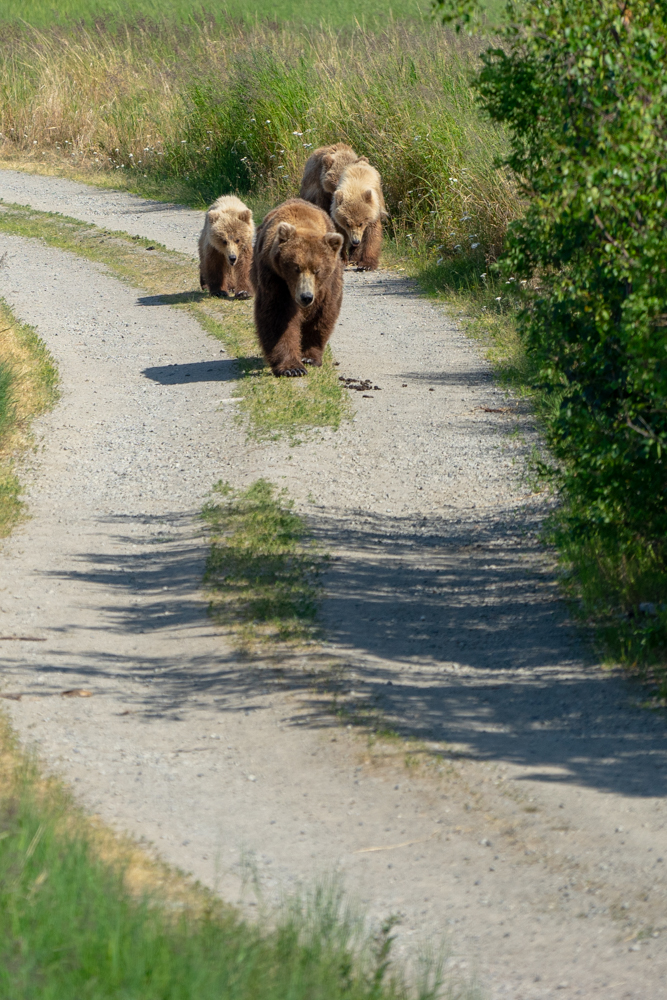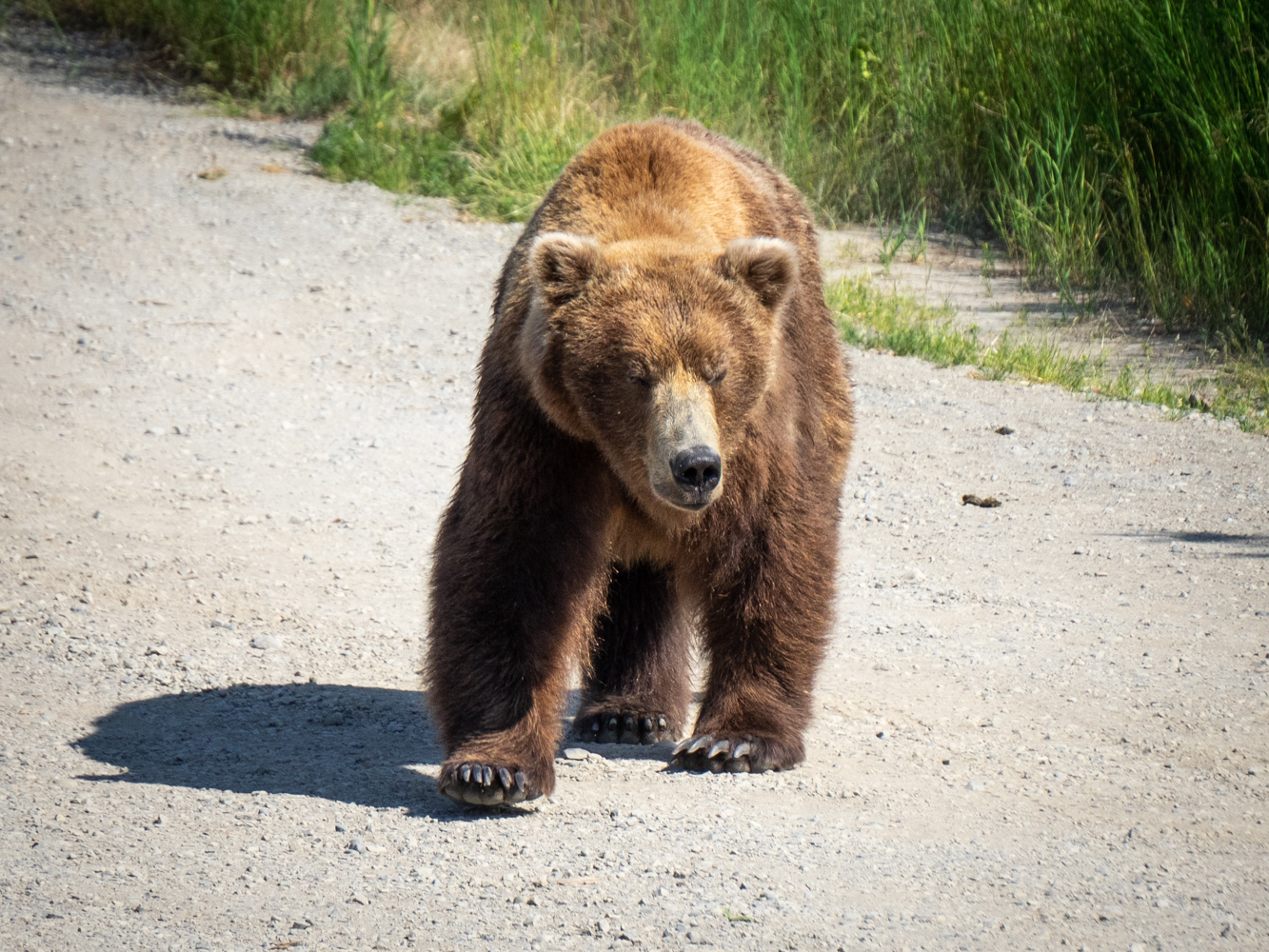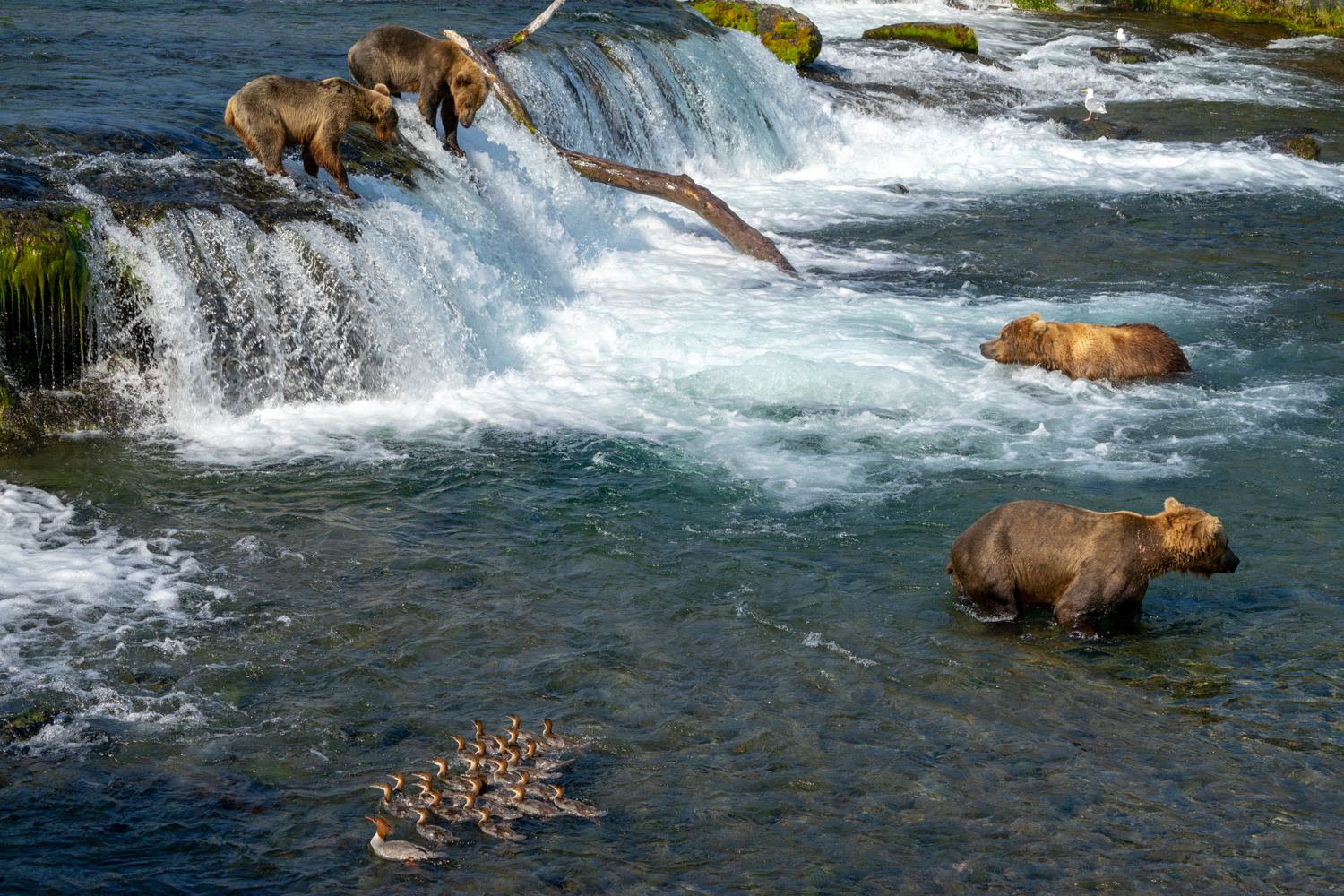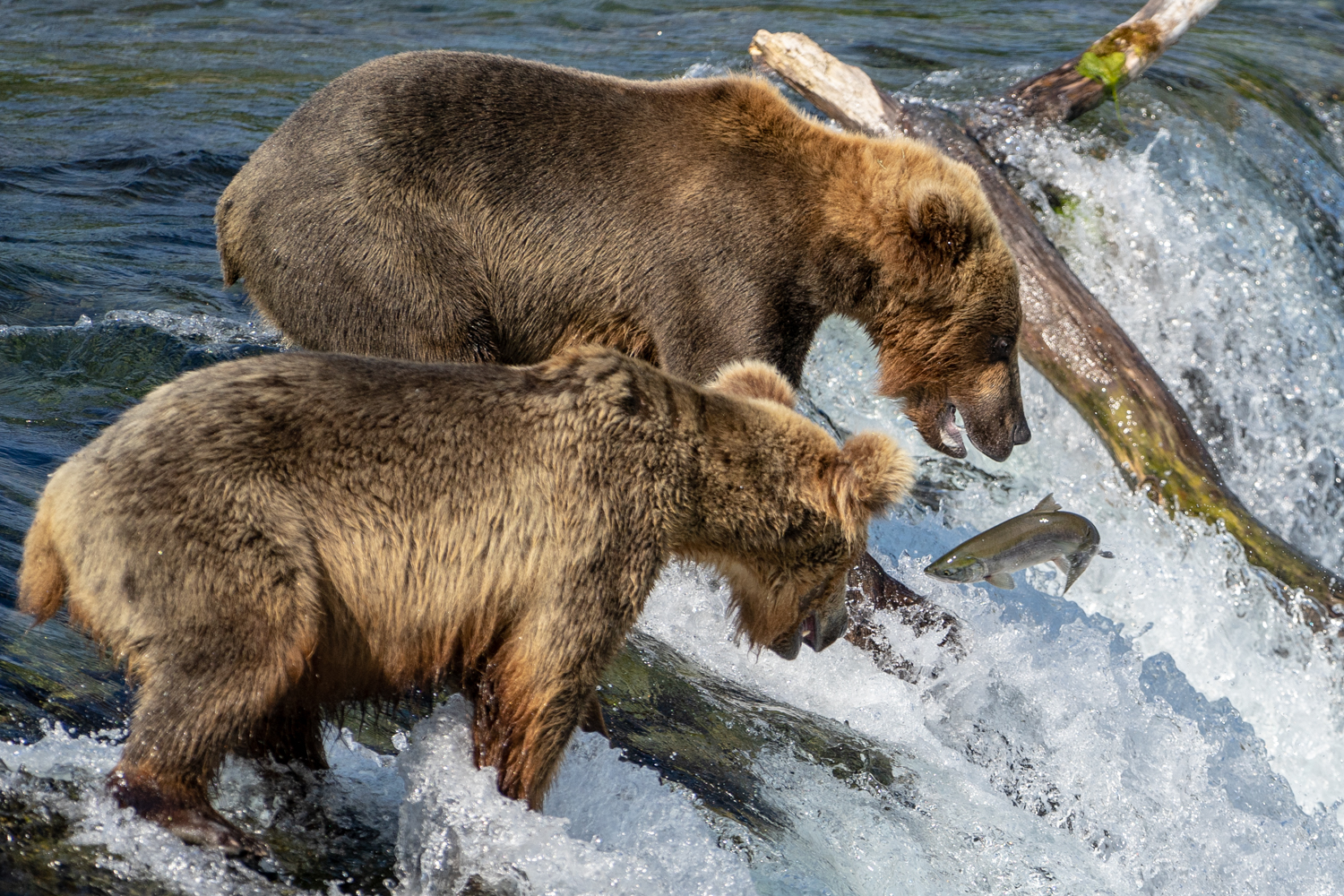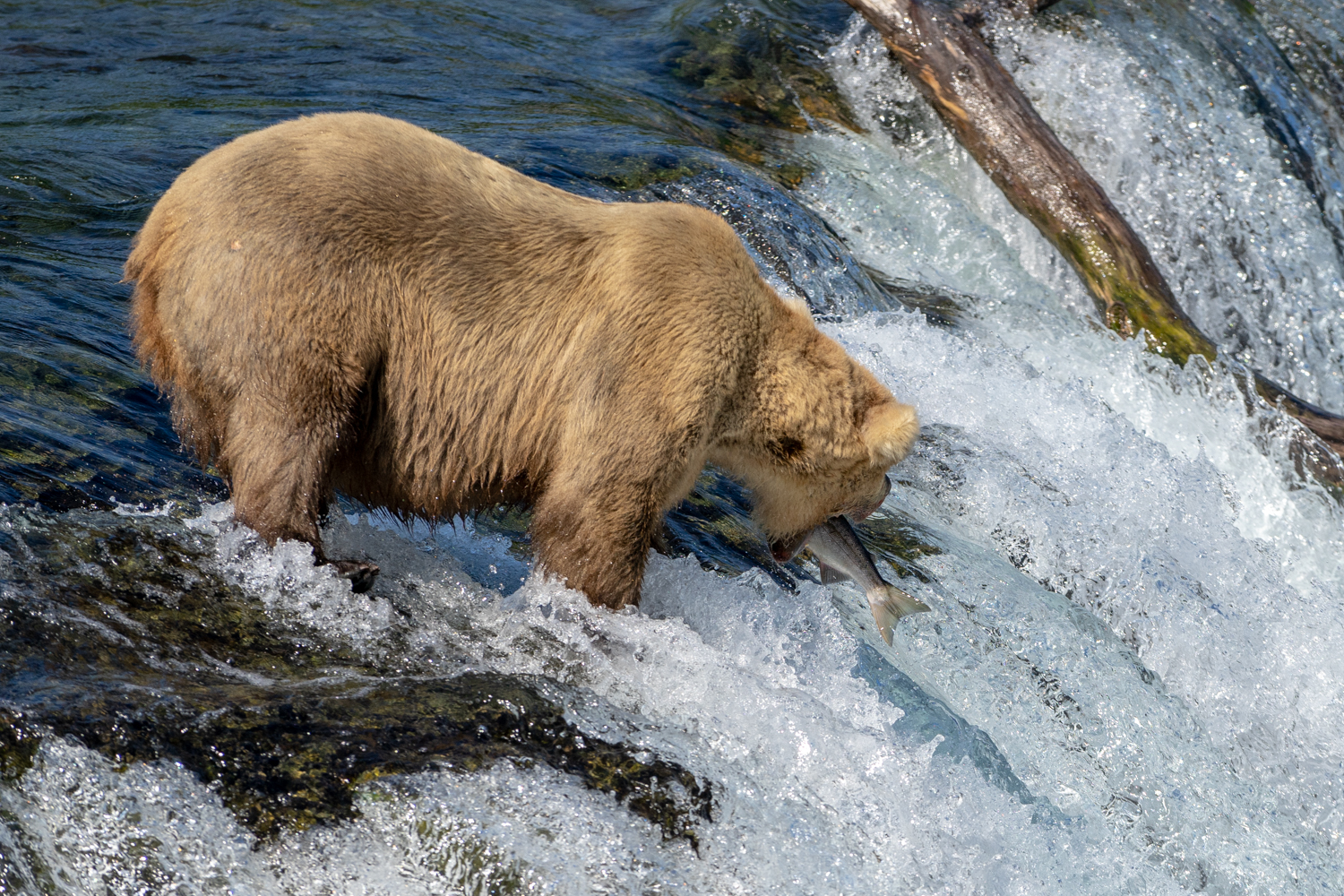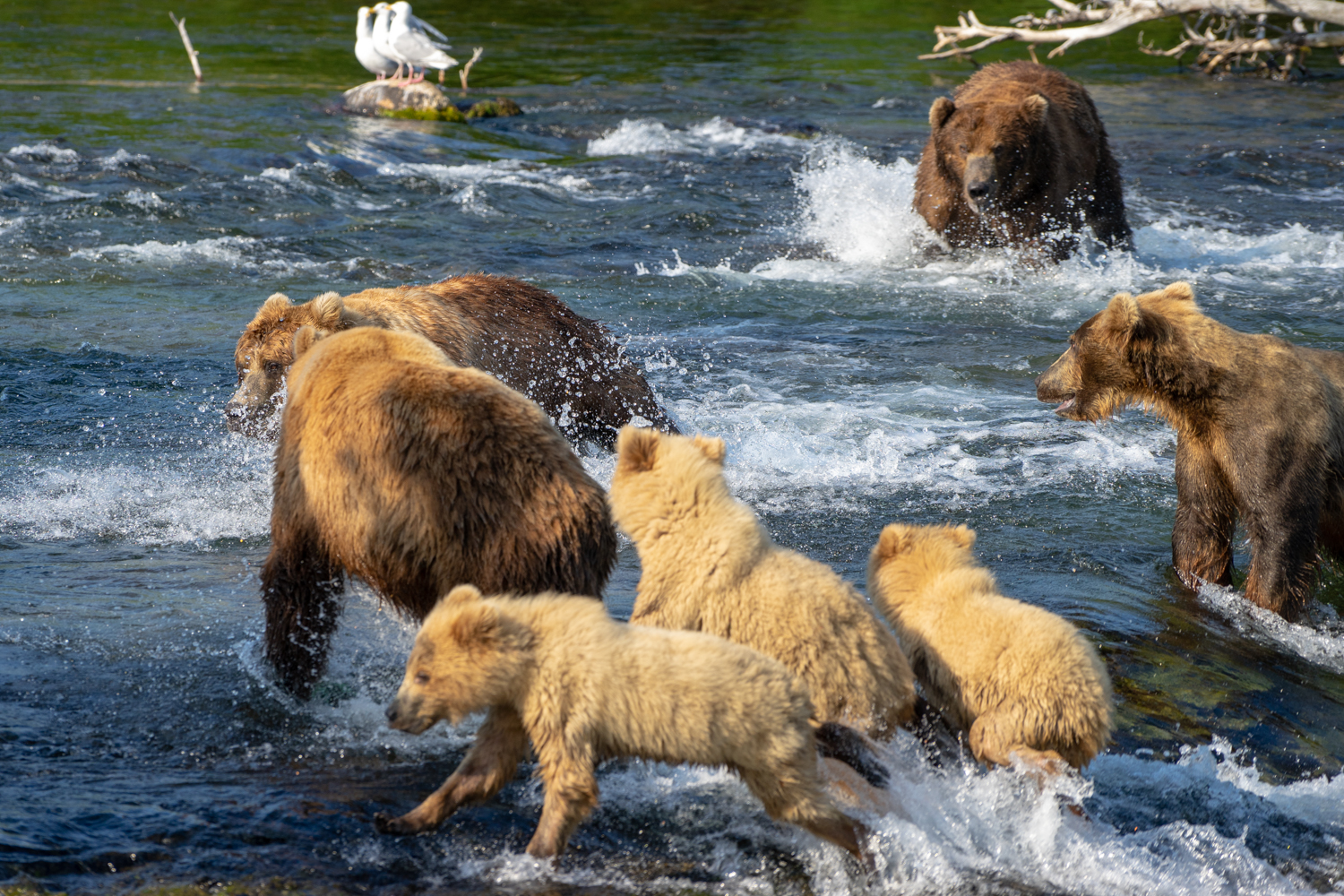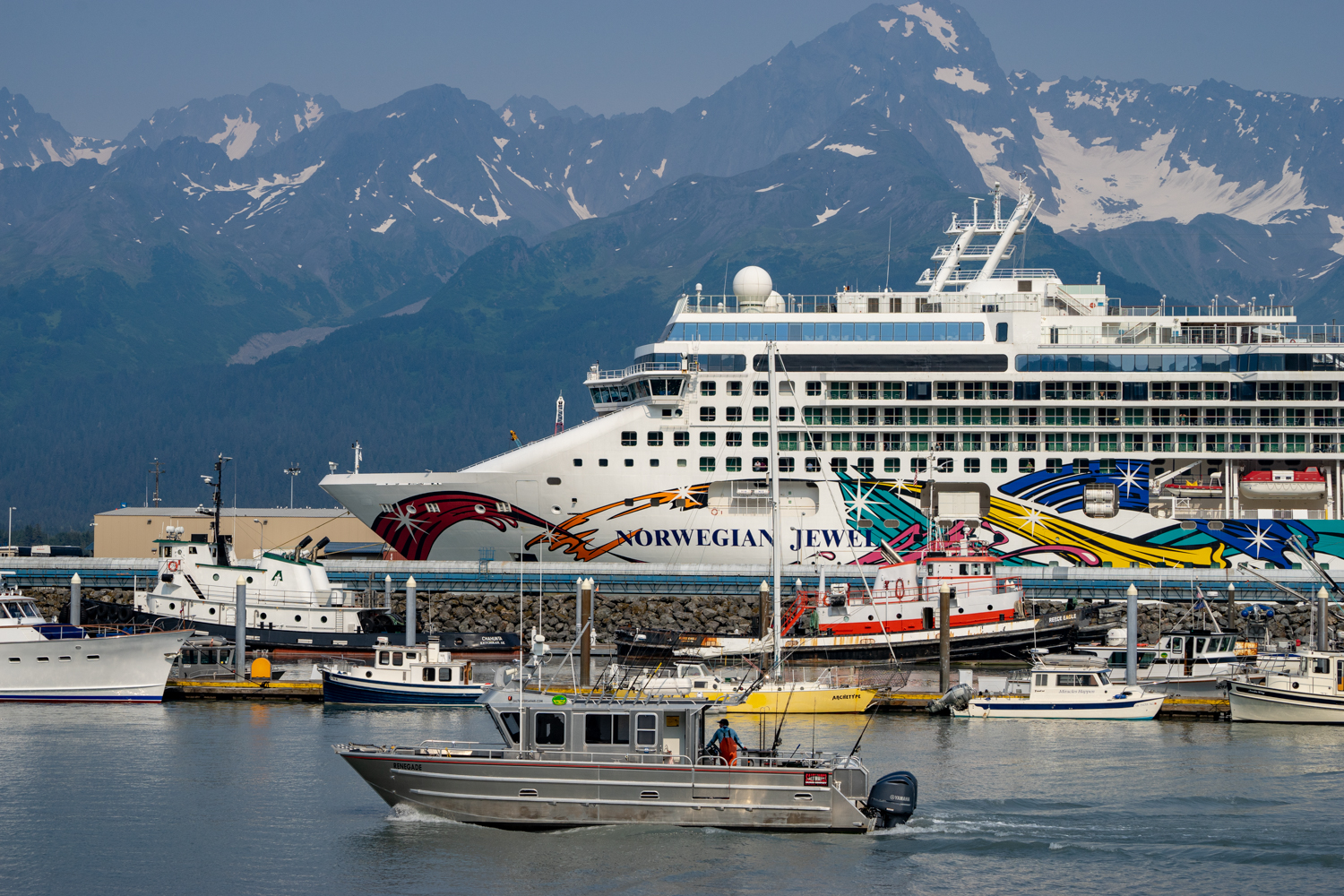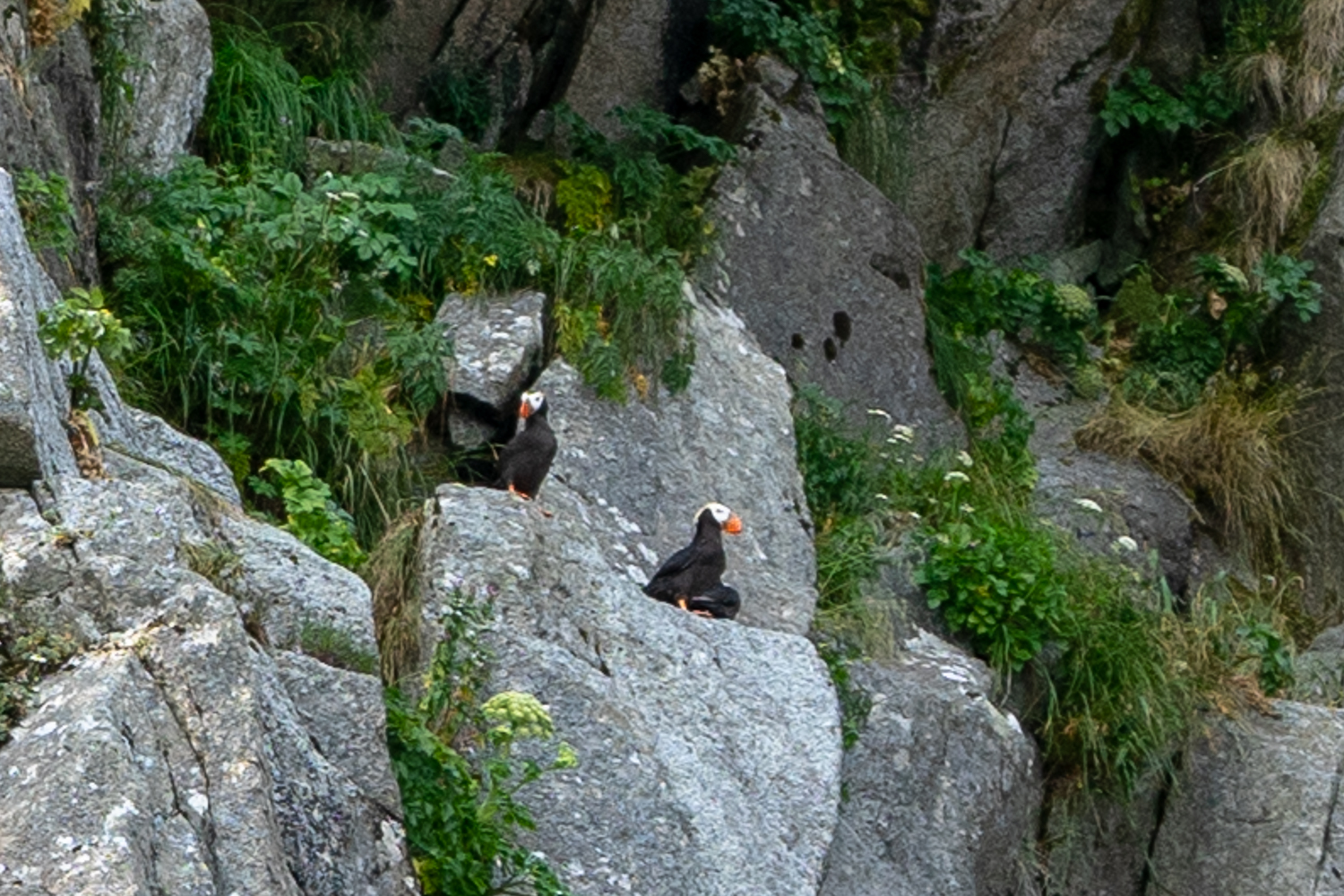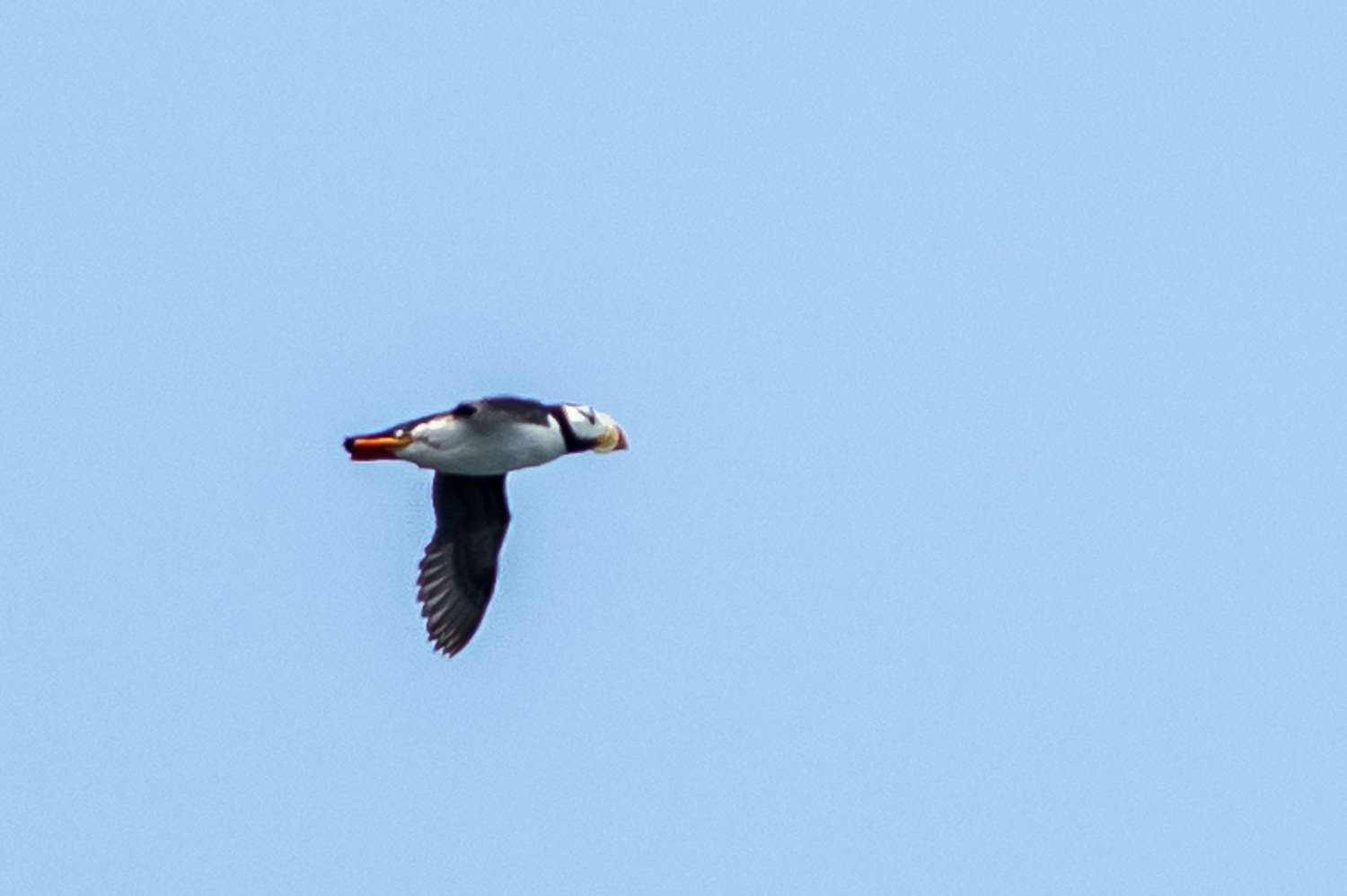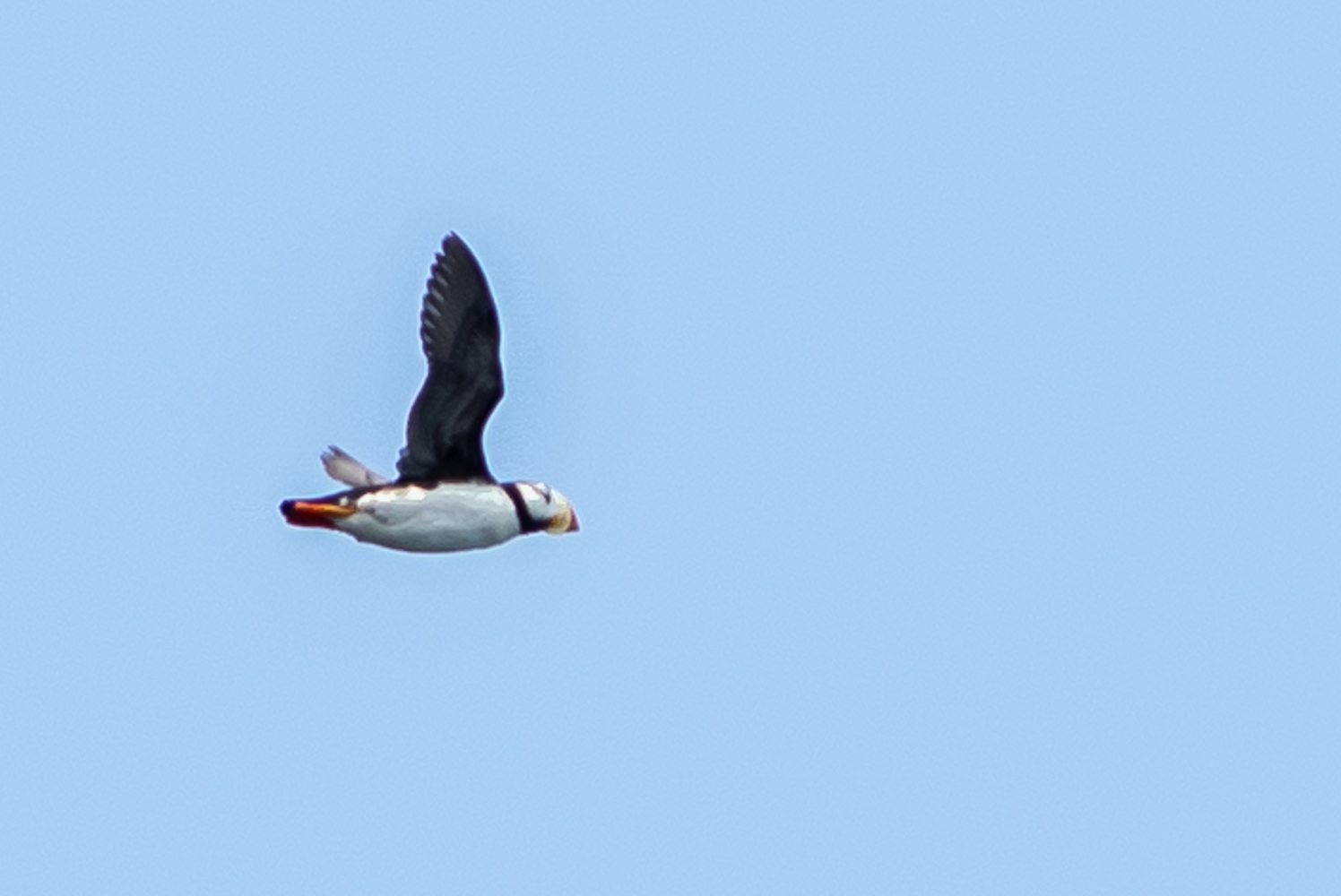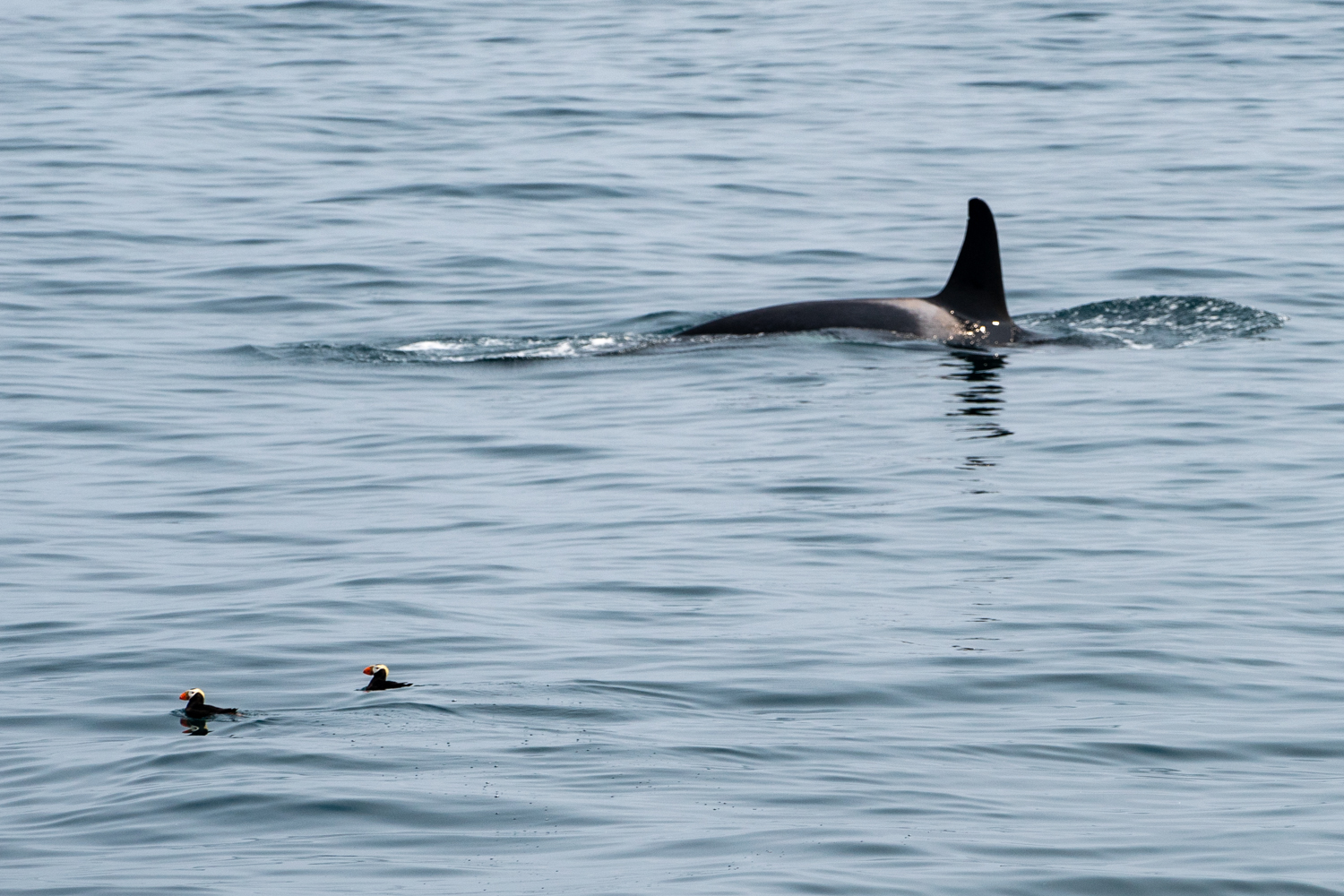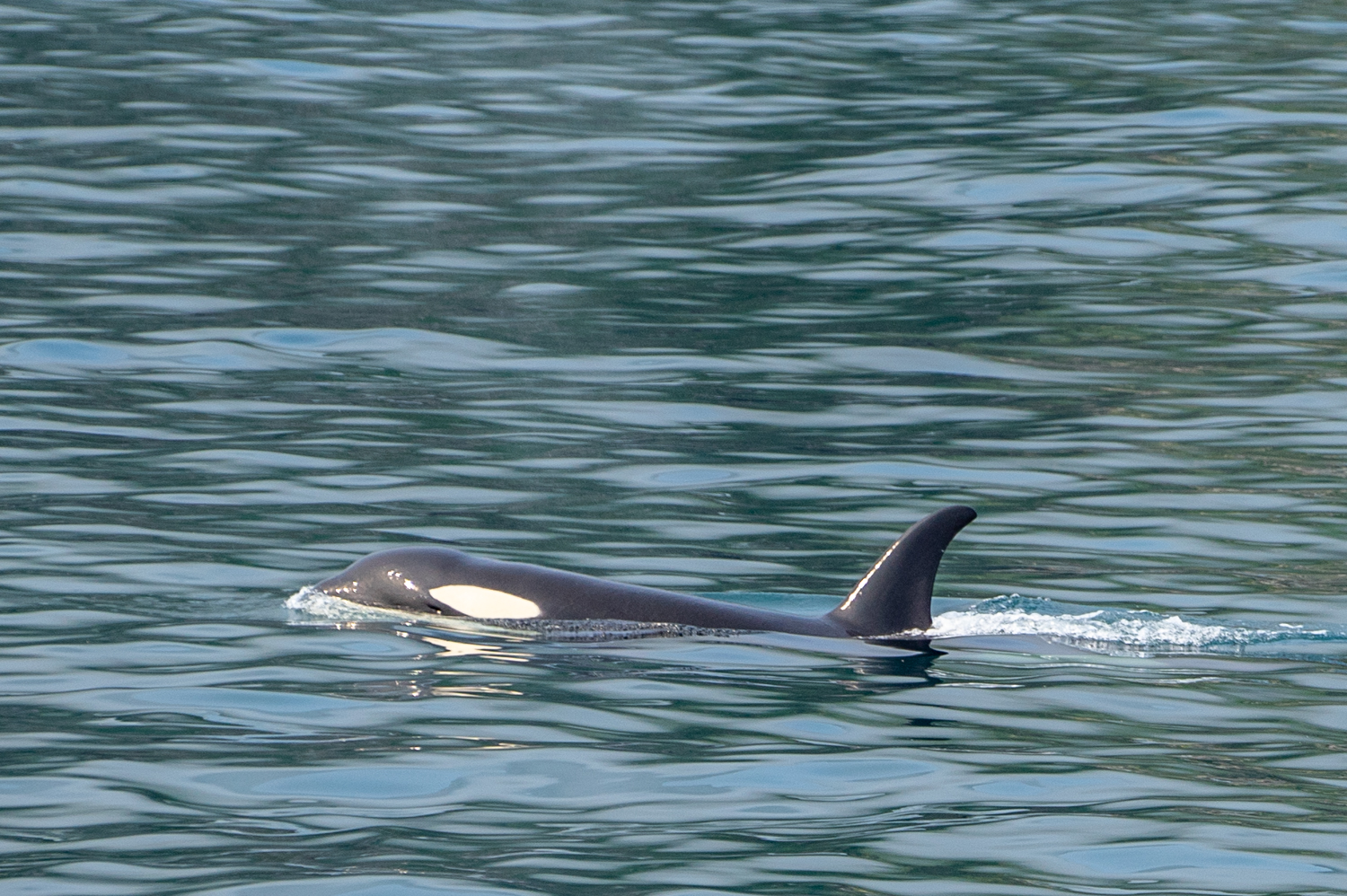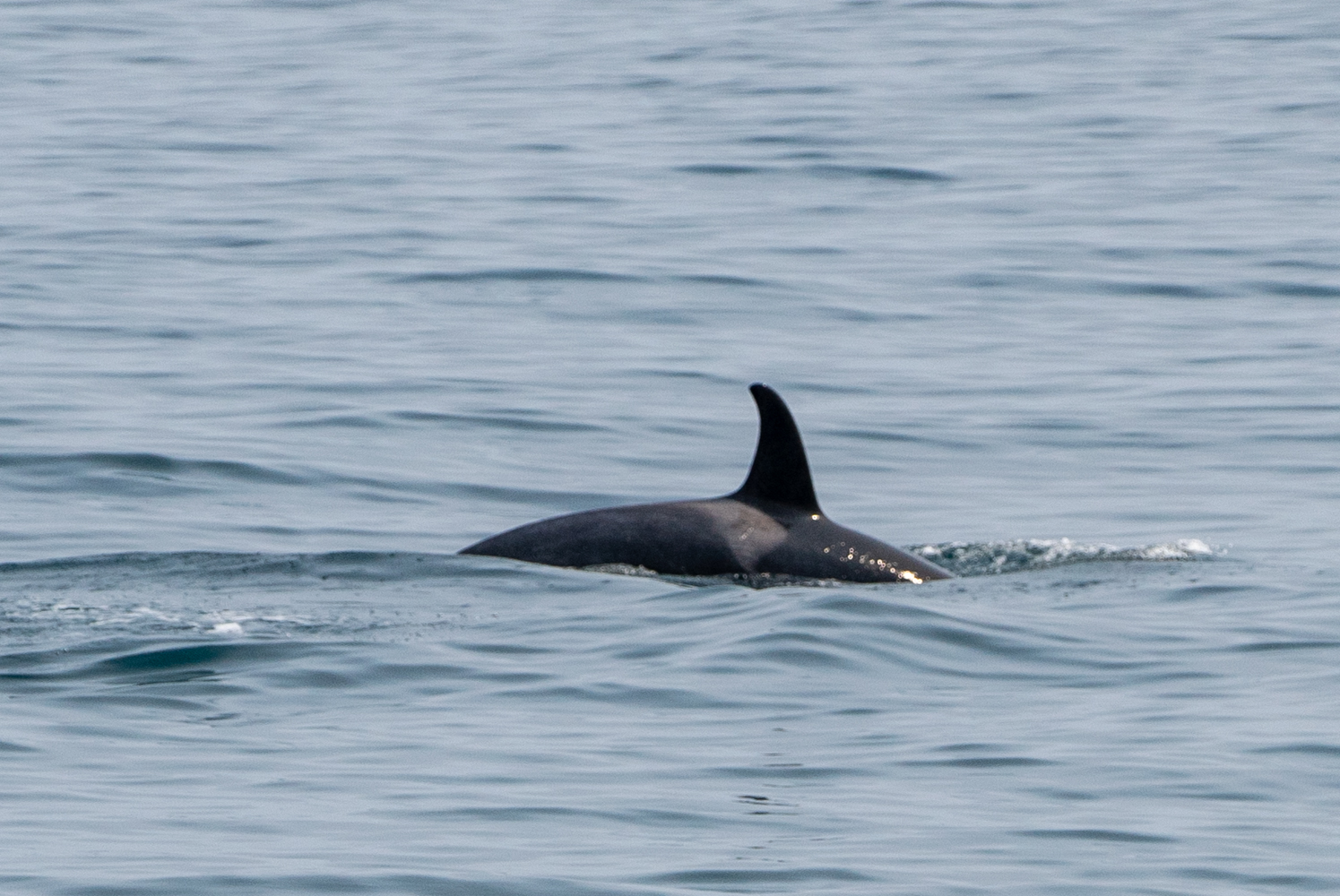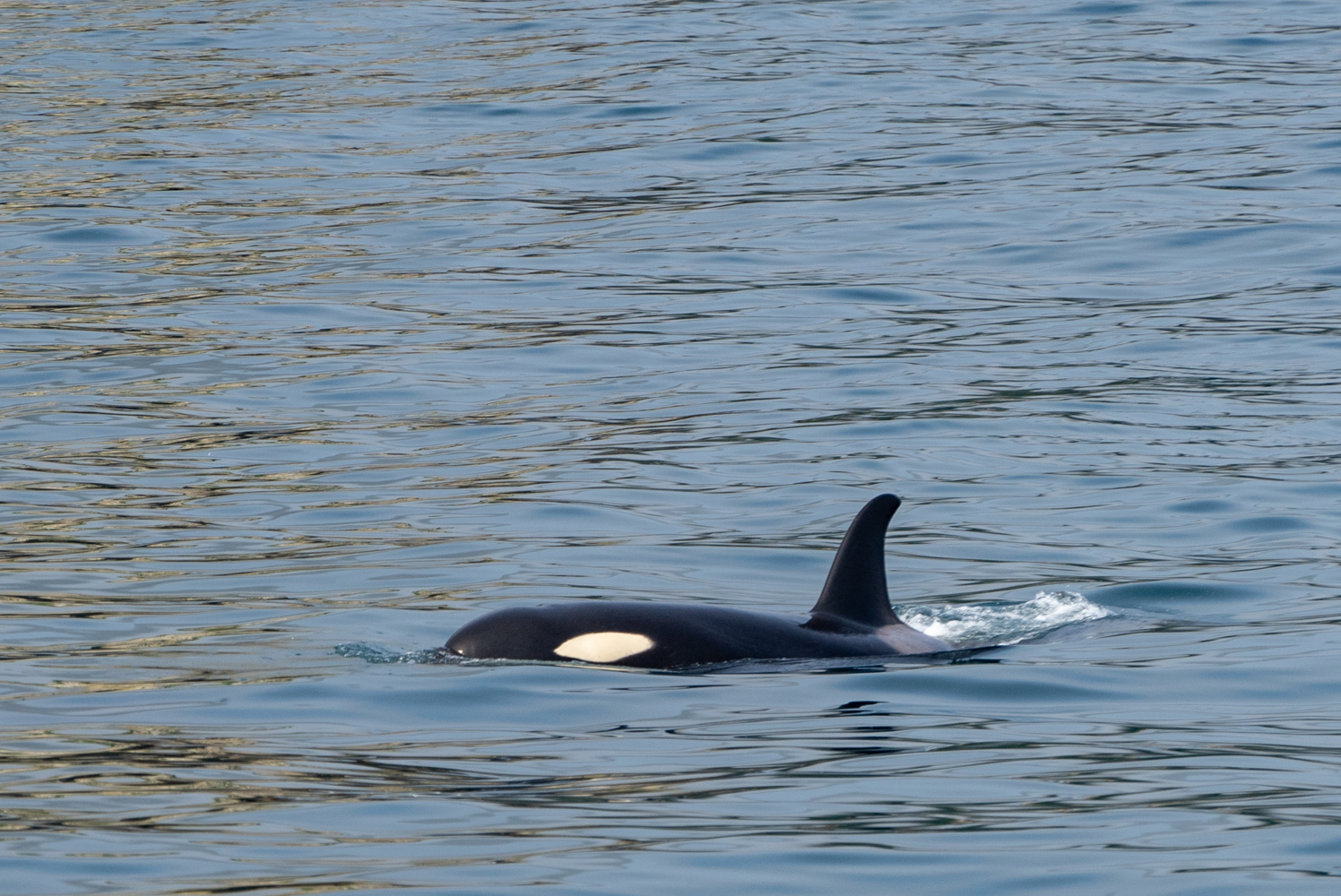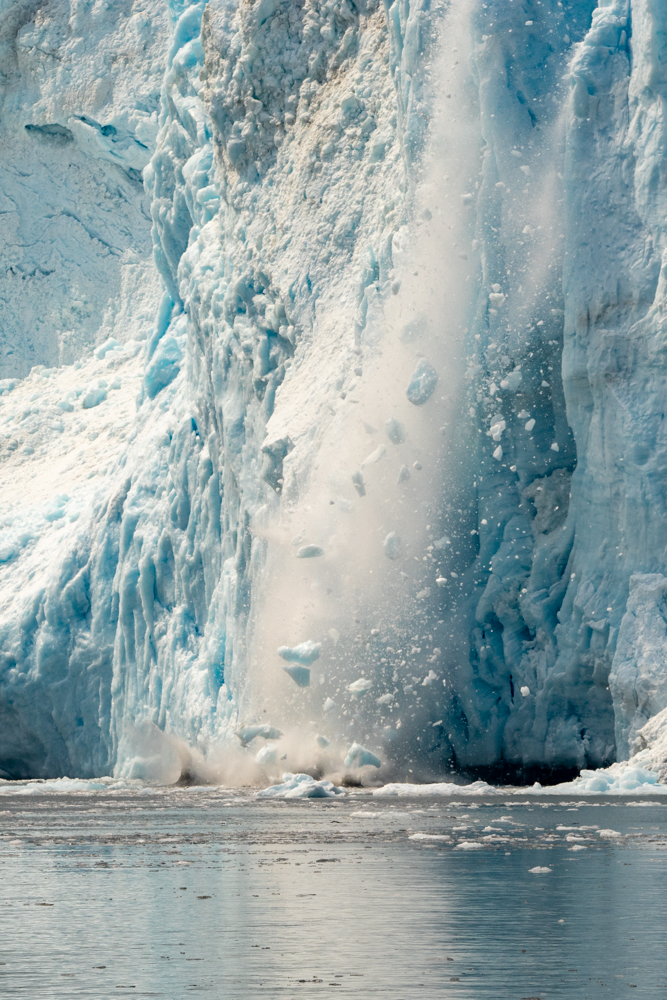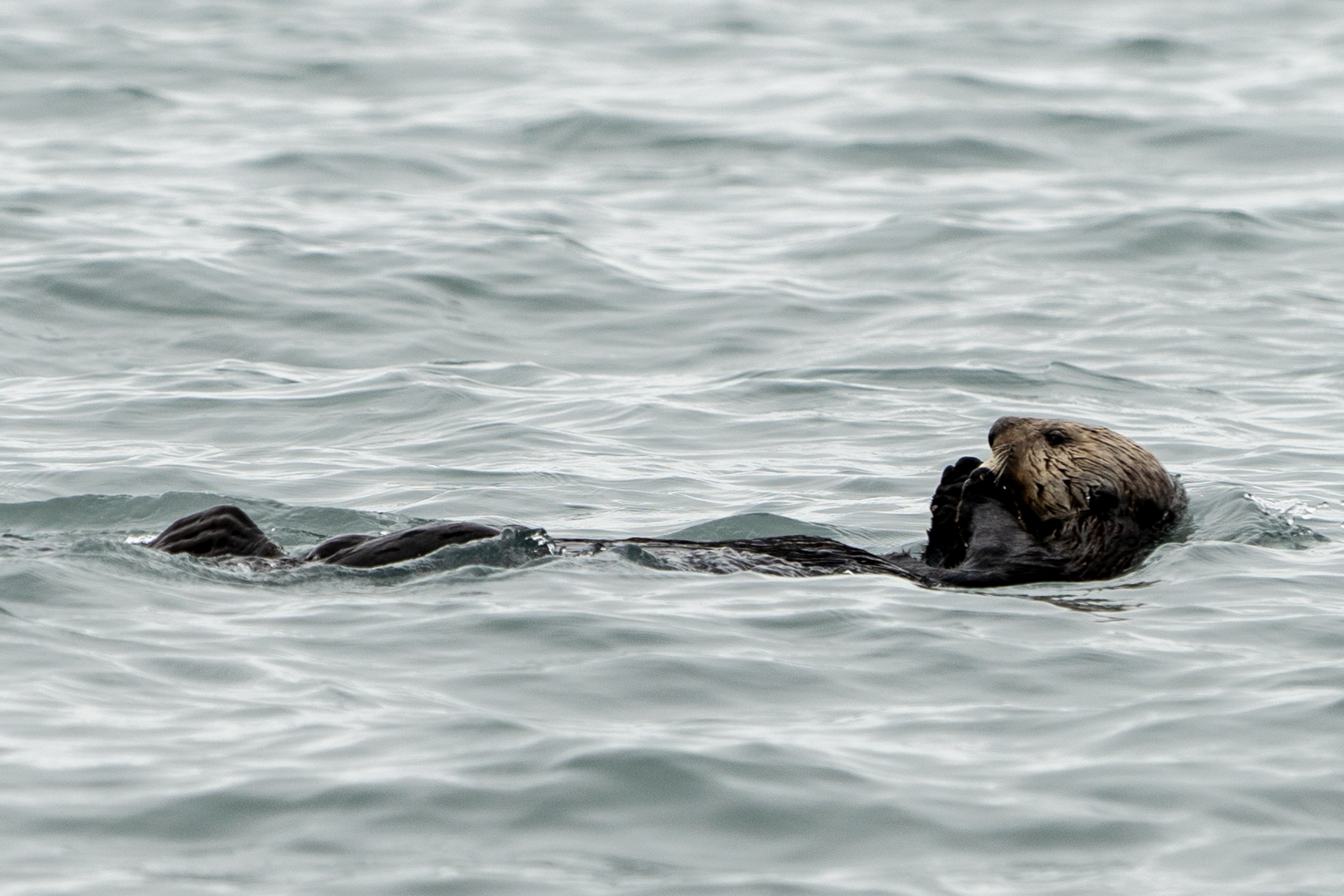This leg our journey in Alaska sees us visiting Homer and Seward. Homer’s nickname, “the end of the road,” is fitting as it not only refers to its location at the end of a four-and-a-half-mile spit that unspools from the highway into the dark waters of Kachemak Bay, but is is the end of our journey to Alaska.
Day 1: Beating the Records
We had been prepared for rain and bad weather in Alaska and for the views to be interrupted by poor weather. We had considered ourselves lucky that we had encountered only a half a days rain the entire trip so far. What we had not been prepared for was temperatures over 30 degrees and bushfires. It reached 92 deg F in Anchorage the day we left, a record for the City. It almost felt like a Sydney summer as we headed to the Kenai Peninsular for the last leg of our Alaskan adventure. Several fires were burning just north of Anchorage and another had taken hold in Swan Lake on the Kenia Peninsula. Pushing onto Homer we were able to only vaguely make out the mountain ranges that normally take centre stage in this region. The large active volcanoes in the region – Mt Redoubt, Mt Iliamna and Mt Augustine where completely covered in thick smoke. It actually provided me with one of my very few sunsets.
Named for Homer Pennock, a con man who arrived in 1896 and lured others to the Homer area with promises of gold, today the village swells to more than 15,000 as mainlanders and Anchorage residents descend to fish, and boat in the bay and drink in the quirky Salty Dawg Saloon built in 1897. Pop-up tents and motor homes bigger than double decker busses line the beach. Little shacks on stilts over the beach sell everything from fishing tours to freshly caught fish.
Homer is definitely a land of ‘huntin, shooting, fishin’. Bumper stickers proclaim ‘Homer is a drinking town with a fishing problem’. While i am not a fan of any of these pursuits it is hard to pass judgement when the Alaskans both live and sustain themselves of the land. It is better than the factory farms of the big city that we rely on.
It is said that people come to Homer for two reasons. The first is to go fishing for salmon or halibut (a prehistoric looking flat fish that can grow almost 2 metres long and weigh well over 100lb). Whilst we have enjoyed eating the local seafood, we have no intention of having to go out fishing for it.
Day 2: Bears of Katmai
The second reason people visit Homer is it is the jumping off point to see the brown (grizzly) bears at the famous Brooks Falls in the Katmai National Park. Have you seen that National Geographic photo of a salmon jumping into the mouth of a bear at a waterfall? Well this occurs during a very small window during July when the salmon start to swim upstream to spawn and the bears gather to gorge on the bounty. Fortunately, we just happen to be here at the exact moment when bear and salmon go head to head in a game of survival.
Katmai National Park is an extremely remote location, in an already remote part of the world. To get there we board our second float plane of the trip for the one and half hour trip in to a world where Indiana Jones would be right at home. With hearts pounding, our little plane flies blind through fog and emerges amongst volcanic mountains with over 3.7 million acres of untouched national park below us. Soon a small ribbon of blue water indicates our landing strip.
After safely making it ashore, our first task is to put all of our food in the lockers to ensure no bear mistakes us for a salmon. The walk to Brooks Falls follows a path that includes several raised bridges. As we begin to walk I start to wonder if we got the timing right and if we will actually be lucky enough to see a brown bear. It did not take long for this to be completely dispelled as a mother brown bear with three cubs ambles up a path just below the bridge we are standing on.
The mother bear enters the river immediately below us, occasionally feeding pieces of shredded salmon to the cubs. Suddenly the peace is shattered as a sub-adult bear decides to encroach on her territory. Quicker than any human could climb a tree she chases the other bear. In a flurry of water and dirt the other bear disappears down a track, its tail well and truly between its legs. The site of brown bear in full flight being chased by an even larger bear, not 10 meters away from you is both scary and exhilarating all at the same time. The bad news is, this is the same path we need to walk down to get to the falls.
Waiting for a few minutes in the hope that it is all clear Kathy bravely pushes me in front of her and hides behind me as we slowly (but loudly) walk the 15 minutes it takes to get to the viewing platform at Brooks Falls. As we walk to the edge of the water, the site of up to a dozen bears all in the river or on the banks immediately surrounding the falls and another half a dozen or so down the river is nothing short of mesmerising. Katmai National Park has one of the highest population of brown bears and is the only area that the normally territorial bears will tolerate being so close to other due to the abundance of the salmon.
We spend an hour and a half watching the bears catch, or in the case of the younger bears try to catch, the Salmon as they jump out of the water.
After a while we begin to clearly see the different bears and their own unique looks and behaviour. The National Parks staff generally give all bears a number (based on bear monitors) and some have nicknames. We had our own including ‘Fuzzy Bear’ a teenager with the large fuzzy ears, and ‘Diver’, a larger bear who spent most of his time snorkelling for fish.
We could spend hours watching them eat, play and generally roam the river in search for food. Younger adults jockey for position and occasionally scrap with one another.
A mother duck and her dozen or so ducklings do a kamikaze run in amongst the bears. Clearly duck is not on the menu tonight and the bears ignore them. A very large dominant male arrives on scene, taking up his preferred position at the bottom of the falls and the other bears dutifully give him the space he deserves.
The mother bear and her cubs we had observed earlier arrive at the falls chasing away the sub-adult who had been trying, unsuccessfully, to catch a salmon for about 45 minutes. Taking up the exact position he had been standing, she wastes no time plucking a salmon out of the air and hands it off to the waiting cubs.
Suddenly the dominant male has decided she is too good at fishing and charges her. As bears scatter and water flies, we watch in awe as she protects her cubs who scramble away as quickly as they can.
While I could spend days watching these wild creatures the thought of missing our plane and swimming back to the mainland was the only thing stopping me from staying. Reluctantly we take the hike back to the beach waving good by to Katmai as the volcanic peaks of Mt Iliamna and Mt Augustine rise up through the haze like floating cumulonimbus clouds.
Day 3: Seward and Kenai Fjords
Leaving Homer we make our way towards Seward taking a detour along the 18-mile-long gravel road that follows the shore of Lake Skilak. The web site describes this as “the premier wildlife-viewing area on the Kenai Peninsula with spectacular views of lakes and glaciers”. Unfortunately due to the fires we have less spectacular views of a white-out.
But the real purpose of our next stop was to visit Seward and Resurrection Bay. This is a good spot to brush up on a bit of Alaskan history. Alexander Baranov discovered and named Resurrection Bay after finding refuge in this small and protected bay during his travels, spending 10 years in the area whilst building a new ship. Baranov was a Russian merchant who was tasked by the Russian government to expand their holdings in what is now known as Alaska to take advantage of the lucrative fur trade in the early to mid 1800s.
The town at the end of Resurrection Bay - now known as Seward – is named after Secretary of State William H. Seward who is famous for brokering the deal to purchase Alaska from Russia in 1867 for 7.2 million dollars or 2 cents per acre. A deal that was originally thought to be a waste of money - until of course gold was discovered in the very late 1800’s in the Klondike region (yes technically the Klondike is in Canada, but the gold rush that ensued, in which 100,000 prospectors migrated to the ‘Klondikes’ via Alaska is credited with opening up large sections of Alaska).
While the history lesson is interesting we really came here for sea-life and the surrounding spectacular mountain ranges. Boarding one of the many boats offering tours of the Kenai Fjords National Park we motor out into Resurrection Bay. Here the land tumbles into the Gulf of Alaska creating rocky headlands and islands encrusted with seabirds by the thousands nesting along the coastline. As we cruise just metres from the shear cliff face the clown-faced tufted puffins dart from the upper ledges.
The sea itself reaches inland with long fjords and hundreds of quiet bays created from ancient ice, the perfect habitat for throngs of sea animals including harbor seals, Steller sea lions, and sea otters.
All of a sudden a black and white submarine rises from the sea. Having seen the distinctive dorsal fin before we are quick to recognise the orca, but this time a small pod of females and babies. Coming to a stop we slowly watch the family glide past surfacing and diving effortlessly.
All of these waters are glacier scoured valleys created from the relentless supply of ice from the Harding Icefield which covers an area of over 770 square kilometres. It feeds nearly three dozen glaciers flowing out of the mountains, six of them to tidewater. We get a good look at one of these, Aialik Glacier, with the boat weaving through the small ice burgs bobbing in the water, to sit just off the wall of ice.

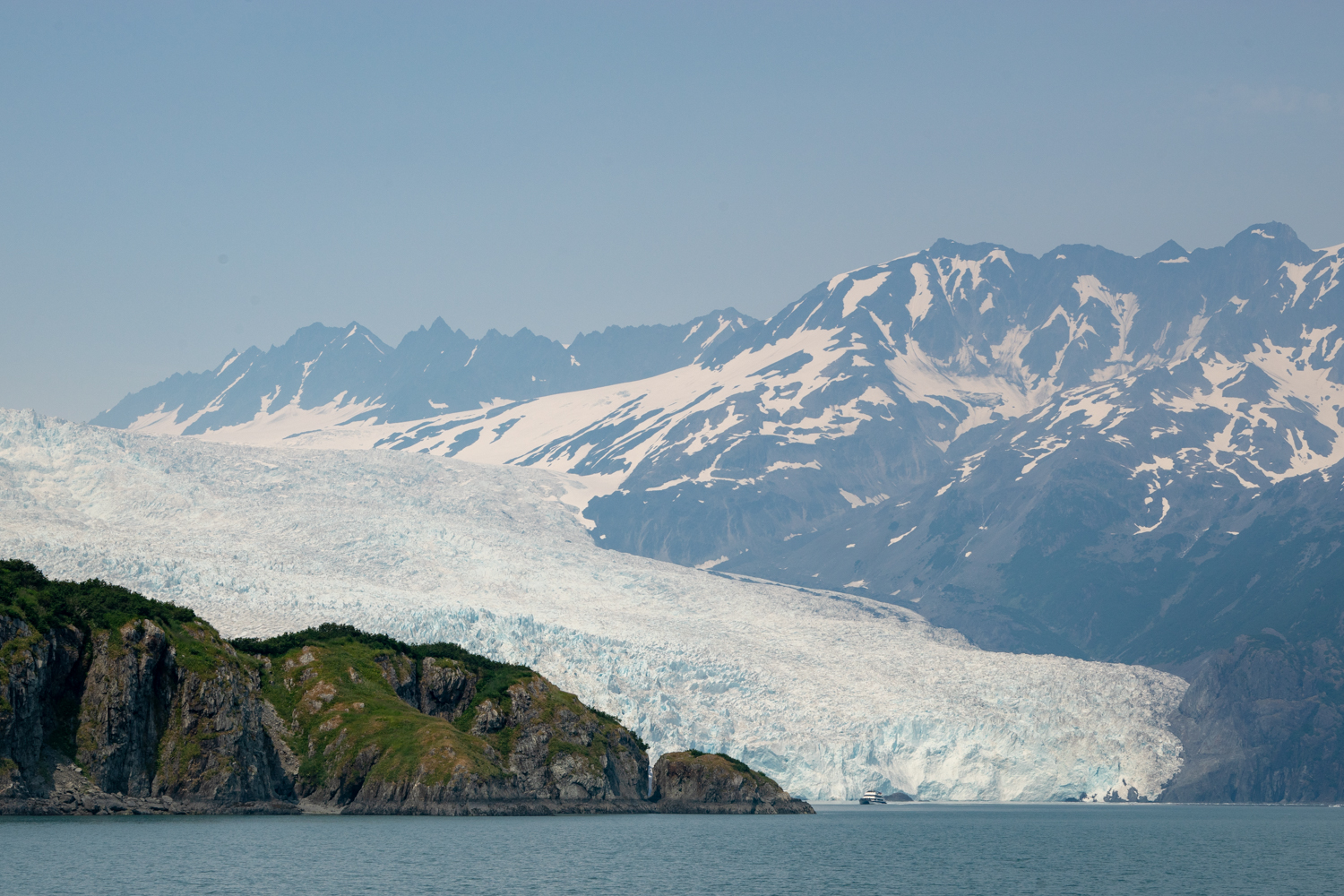
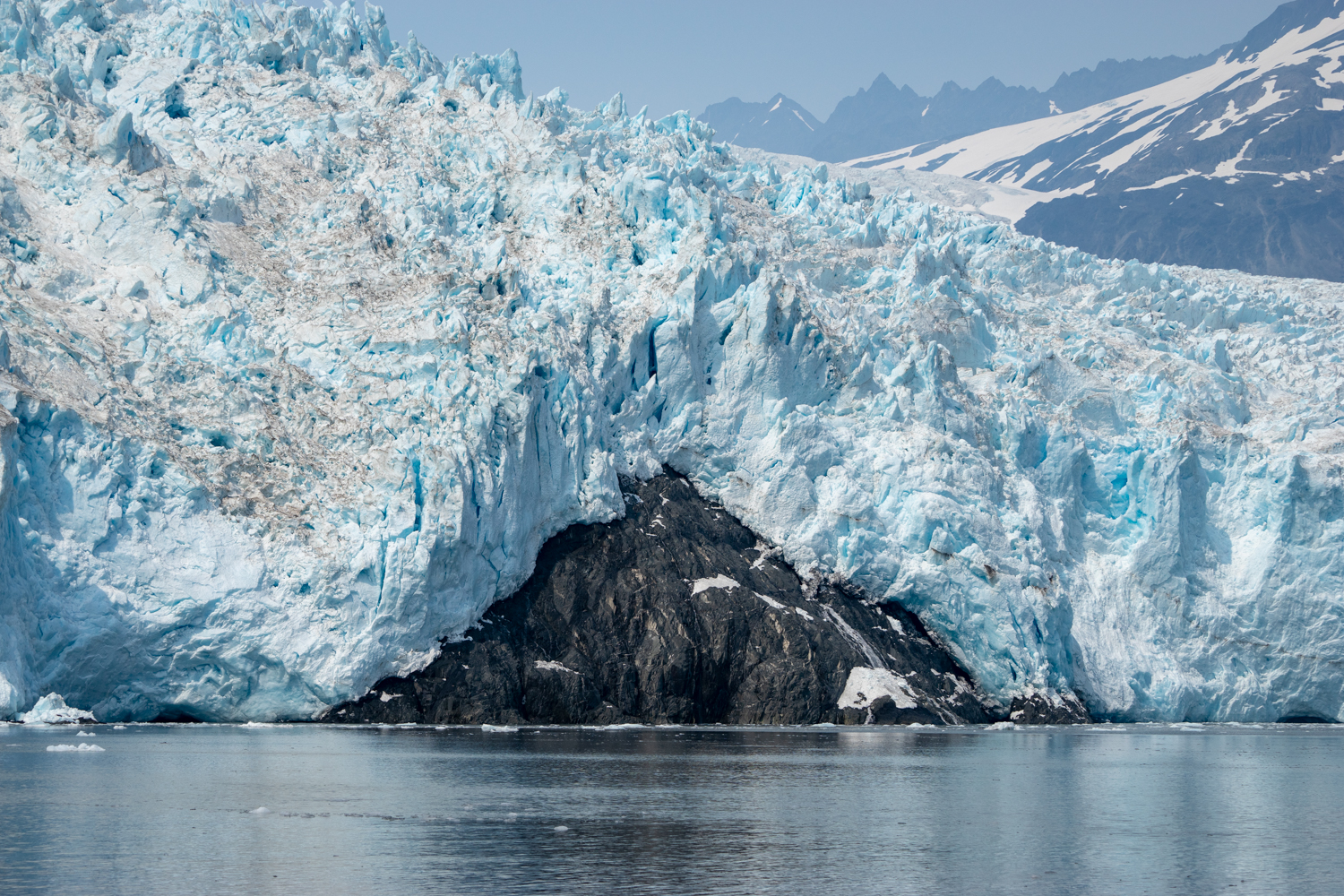
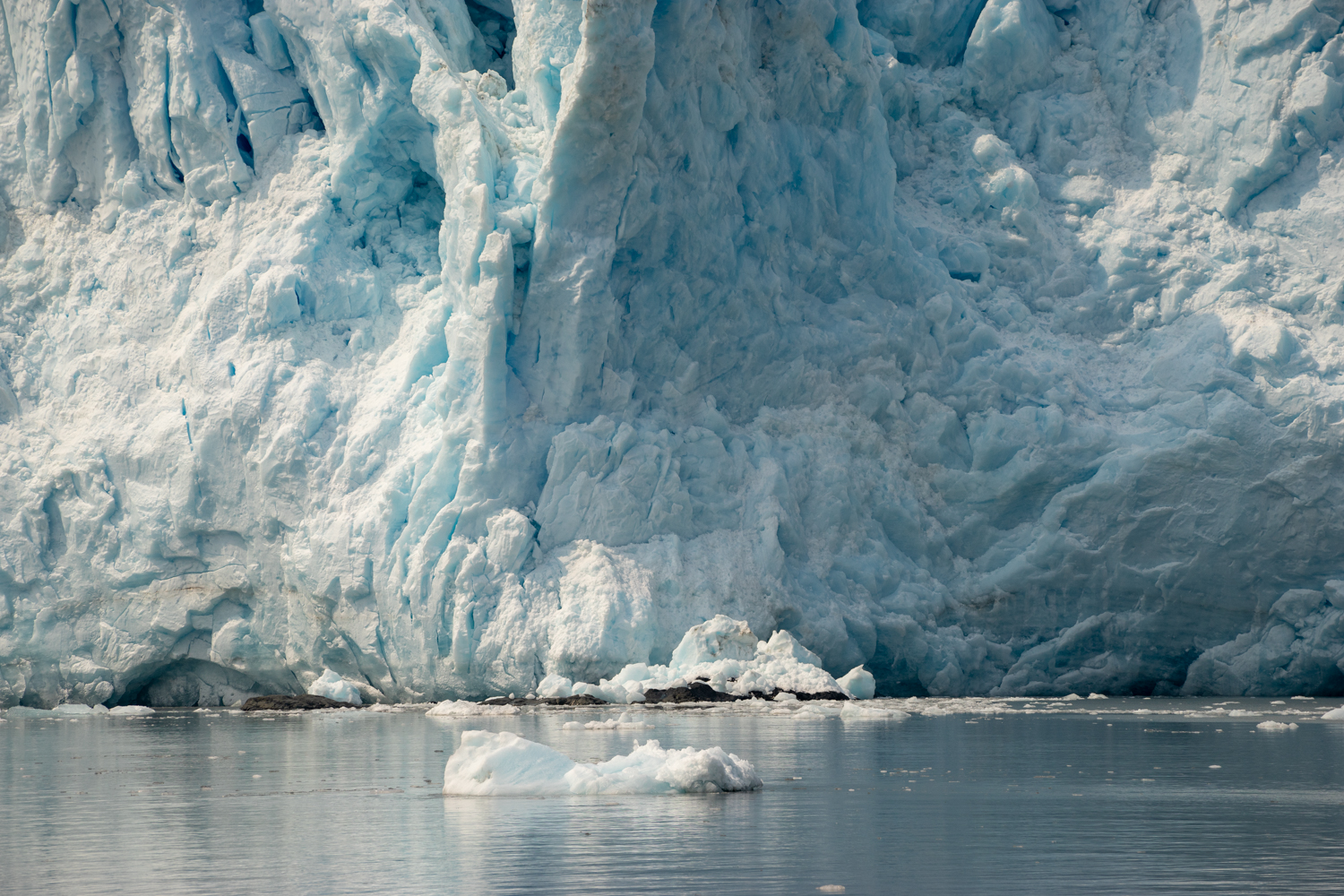
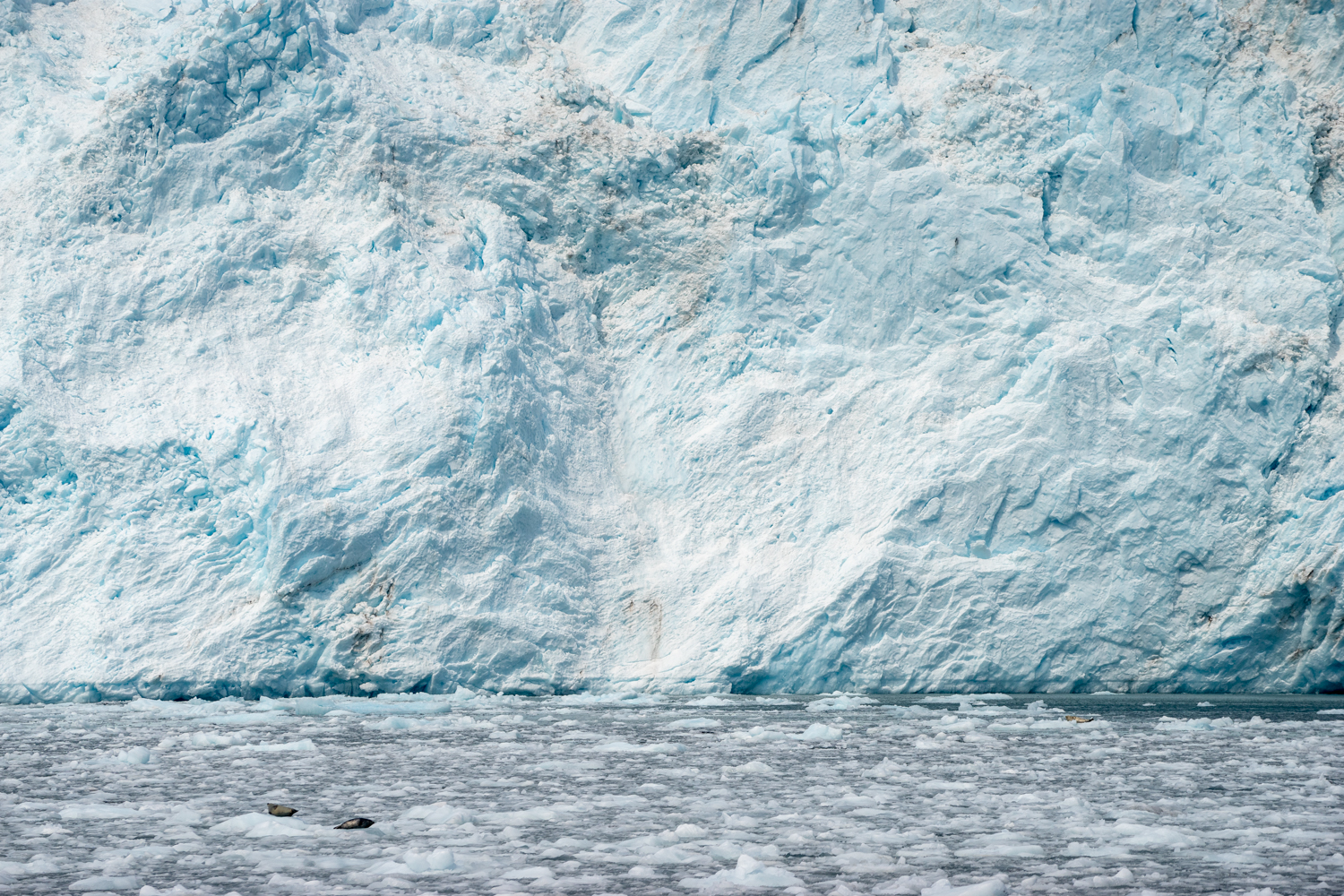
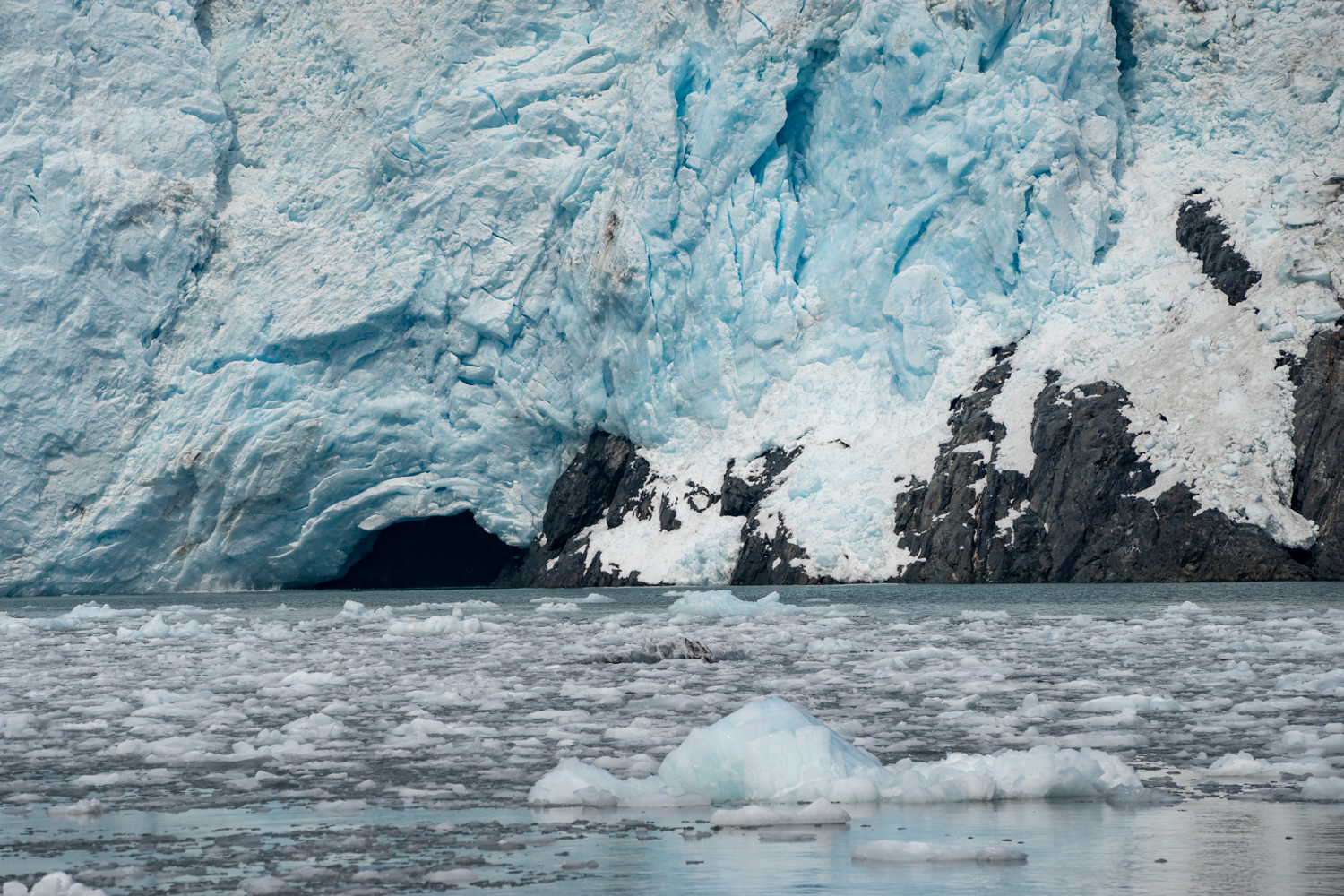
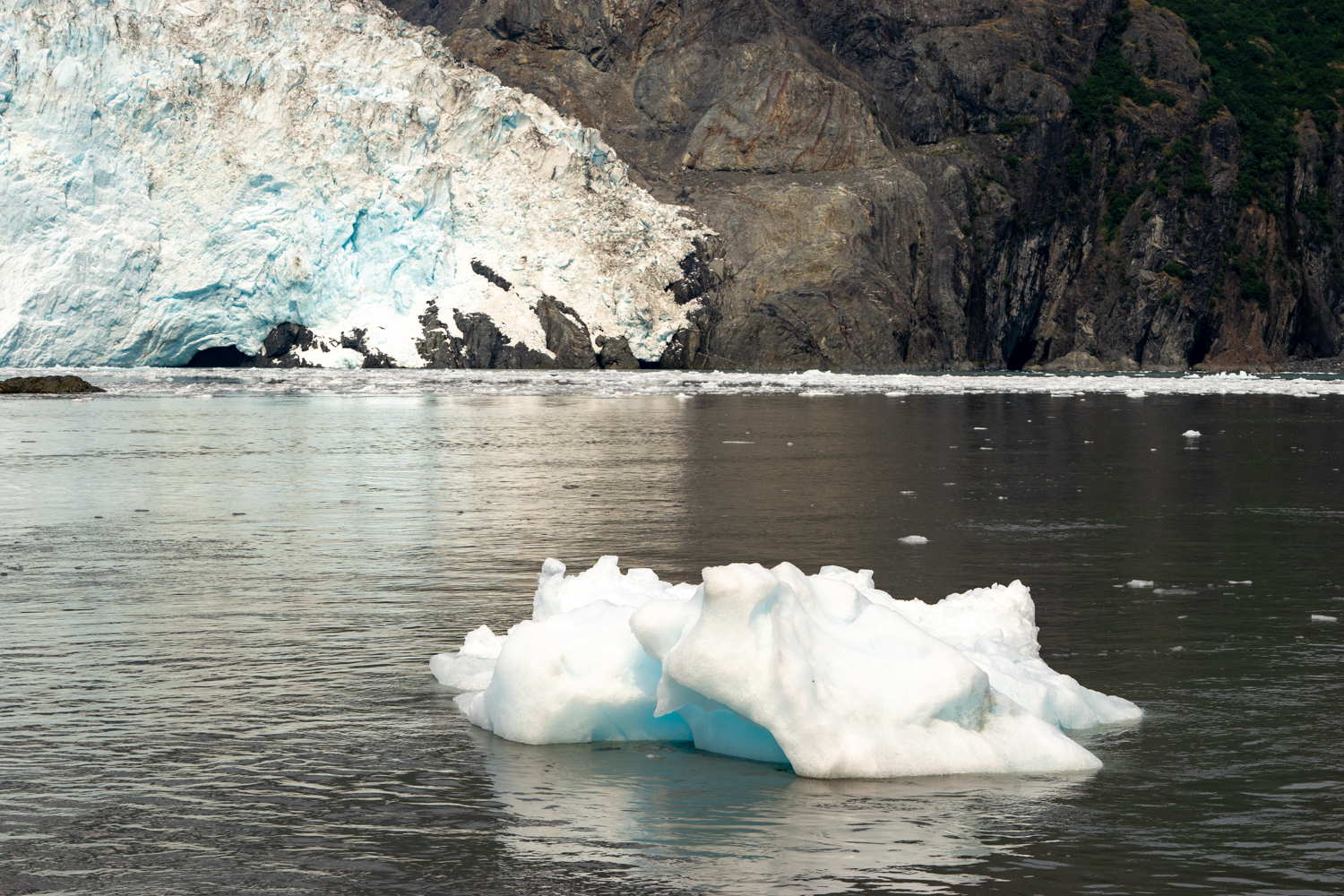
Here, where the glacier meets the ocean, we sit in silence listening to the occasional crack echo through the valley as the ice compresses and breaks. Suddenly large chunks of ice come tumbling down the face of the glacier as it ‘calves’ ice bergs into the ocean.
Cruising back to Seward the retreat of the glacier is a timely reminder of the changes to global sea and air temperatures and the sad fact that many of these rivers of ice may never be seen by our grandchildren.
Day 4: An Exit to our Journey
Off the rocky shoreline between Seward and Lowell Point, two sea otters playfully tumble together then duck dive under water leaving me to guess where they will rise again. Watching closely, one of them disappears under water to emerge with a clam tightly tucked in its paw. It then proceed to smash the shell against its belly before tearing out the meat with its teeth.
This morning I decide to head out hunting for sea otters. In the 1700’s Russian explorers began harvesting sea otters for their fine, dense fur, which traditional natives have long known to make extremely soft and warm clothing. Over the next 150 years, as the fur trade continued, the species was hunted to near extinction. Luckily my hunting was with a camera as populations have returned to healthy numbers since the introduction of bans on its’ fur sale. With the otters finally deciding they have had enough of me stalking them and head out to sea i return to get ready for our last real hike of the entire trip.
Driving to Exit Glacier, the most accessible of the glaciers in the park, we are quickly exposed to the rapid timeline of retreat. On the road almost 1km away from the glacier, on the trail winding through the forrest, and ultimately, on the bare rock at the end of the trail are signs marking 195 years of glacial retreat. Tucked in the bushes is a pavilion built in 1987 that once gave visitors an un-interrupted view of the ice. Now it looks into a wall of green alder shrubs, a stark reminder of the pace of change.
Despite a dodgy knee from walking and hiking over 300km since we have been away, we make one last march up a steep trail to get a view of the glacier and icefield. Climbing almost 800 metres in elevation the trail opens up into a stunning meadow area with a carpet of flowers cascading down into the icefield below.
Sitting on the precipice for one last time is is sad to think that Exit Glacier, which got its name from the explorers who travelled from Homer to Seward across the Harding Icefield and exited at this site, is also our exit to Alaska. With only a couple of travel days left it is a fitting end of our journey.















